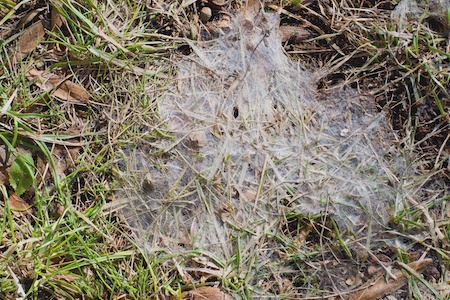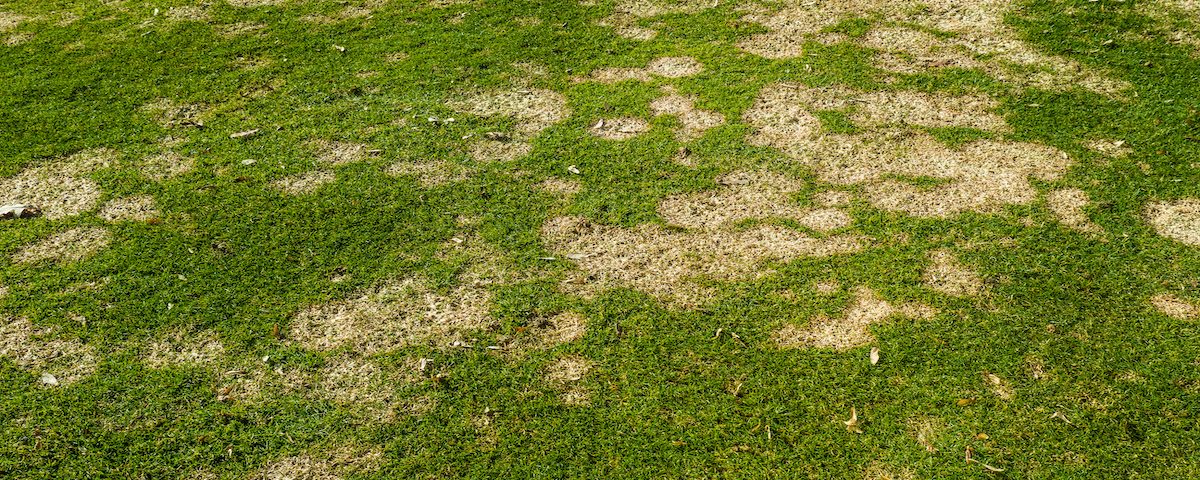
Our Clients:

Are the Brown Spots in Your Lawn Snow Mold?

What Is The Best Time of Year to Lay Sod?
December 1, 2021
How To: Soil Preparation Before Laying New Sod in Lynnwood WA
March 1, 2022After a hard winter, homeowners often ask if their lawn has snow mold. The spots can ruin the appearance of even a healthy lawn. Brown spots growing in your lawn could be caused by one of our common fungi problems.
By snow mold, they usually mean one of three diseases, often grouped together because they are similar in appearance and treatment. The diseases are known as pink snow mold, fusarium patch, and microdochium patch.
Here is how to identify these common diseases — and most importantly – what to do to improve your lawn. Whether you have new sod or a mature lawn, this proven strategy will help you keep your yard beautiful.
How can you identify snow molds?
- Even though it’s called snow mold, this group of diseases doesn’t require snow
- Most people notice the spots in the spring and fall
- The spots appear in cool, wet weather
- You will see reddish-brown patches from 1” to 8” in diameter
- The center of the patch will be tan or might even have healthy green grass
- The spots grow larger and might turn light gray
- Dog urine spots look similar, but you will notice urine spots don’t expand in size
- On a wet day, you might see white or pink structures on the outside edge of the spot
- Rain or water runoff can move the fungus spores to new areas and create new spots or streaky patterns
- Spots can grow to cover large areas
How serious is it?
Depending on the disease type and stage, you might have damage to the blades. The blades are the top of the grass. New blades will grow.
However, the roots and crowns could be damaged. Fusarium patches can kill the grass. If the roots and crowns die, then the grass will not regrow.
Take Immediate Action
Here is what you can do if you have determined your lawn has pink snow mold, fusarium patch, or microdochium patches:
- Experts don’t recommend chemical treatment for pink snow mold, fusarium patch, and microdochium patch for home lawns.
- Grass often recovers on its own as the weather warms
- Remove leaves and debris from the lawn with a rake. Use a hard rake on areas with matted grass and remove the debris.
- If the lawn is due for mowing, go ahead and mow it. Bag the clippings to remove the discolored blades of grass. Never let the grass grow long enough to flop over.
- Maintain good soil moisture, but don’t run your sprinklers if the lawn is already wet from rain, fog, or frost
- Plan to repair any damaged areas by patching or overseeding in the fall or spring
- Consider aerating the lawn in the fall or spring
- Consider thatching if the thatch layer is more than ¾’ thick
What can I do in the future to reduce the risk of these diseases?
- Go into the winter season with a lawn mowed at your target height (usually about 2”). You don’t want the grass to be too long during the winter.
- If you like to keep your grass a little longer (say 3”) during the peak of summer, bring it back down to your target height in September. Do it gradually – set your mower to cut lower with each mowing until you’re down to your target height again.
- Continue mowing through the fall and into the winter. If the grass is still growing, then continue your mowing schedule. As always, follow the 1/3 rule of mowing.
- Keep the lawn raked and free of leaves and tree debris through the fall. Go into the winter and snow season with a clear lawn.
- Follow a good fertilizing schedule for applying fertilizer and lime — but don’t over-fertilize.
- In the dry, hot summer days (July to early September), you can let the lawn go dormant, but don’t let it dry out or die. For most areas of western Washington, you will need to give your lawn water every two weeks to keep it healthy. It won’t be green, but it will have the moisture it needs to stay healthy through its dormant period.
What locations are affected by pink snow mold?
With its cool, wet weather for much of the year, western Washington provides suitable conditions for growing fungi (meaning good for fungi – not so good for your lawn).
In addition to cool, wet weather, western Washington foothill areas such as Buckley, North Bend, Issaquah, Fall City, Snoqualmie, Monroe, Snohomish, Lake Stevens, Arlington, Marysville, Granite Falls, and Sedro Wooley can be affected by heavy or lingering snow. In fact, another fungus, called gray snow mold, is a possibility when snow stays on a lawn for over 40 days.
Seattle Public Utilities’ Green Gardening Program lists fusarium patch as one of the two most common turfgrass diseases in western Washington (the other one being red thread).
Thurston County (including Olympia, Lacey, and Tumwater) lists fusarium patch as one of the three most common turfgrass diseases in the county (the other ones being red thread and brown blight).
Want to know what fungus causes each disease?
Because lawn professionals use the common name for different conditions, you will find different names and definitions for each disease. For example, what one disease guide calls snow mold – another one might call fusarium. Here is the breakdown from Western Washington University Cooperative Extension.
- Mongraphella nivalis is the source of pink snow mold and microdochium patch.
- Fusarium nivale is the source of fusarium patch.
- Typhula Ishikariensis and Typhula incernata are the sources of the disease gray snow mold or typhula blight.
Call your local professionals!
For all your turf grass needs, call Country Green Turf Farms at 360-456-1006. We’re happy to help!










